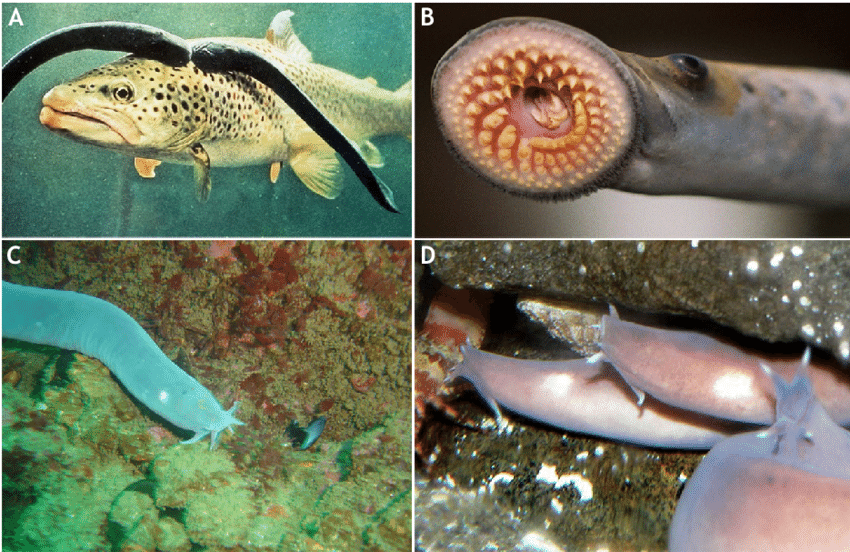A global logical group of north:
40 specialists from seven nations has effectively sequenced the principal genome of the myxini, usually known as hagfish. Hagfish address the main significant gathering of vertebrates for which no reference genome of any species has been accessible. This notable review has given experiences into the transformative history of genome duplications that occurred in the progenitors of vertebrates, a gathering that envelops people. By unraveling the hagfish genome, scientists gain important data about the hereditary cosmetics of these special animals and shed light on the hereditary occasions that formed the advancement of vertebrates, including people.

Without a doubt, the sequencing of the hagfish genome holds critical ramifications for both developmental and sub-atomic investigations. It adds to how we might interpret the genomic changes related with the rise of vertebrates and the improvement of particular designs like the complicated cerebrum, jaw, and appendages. The review involves north of 30 establishments from different nations. Among the taking part organizations were those from Spain, the Unified Realm, Japan, China, Italy, Norway, and the US. Eminent givers incorporated the College of Tokyo, the Japan research organization RIKEN, the Chinese Foundation of Science, and the Middle for Genomic Guideline in Barcelona.
The myxini are a gathering of creatures that possess profound sea regions. They are made out of numerous microchromosomes, which thusly are made out of tedious successions. This is notwithstanding the trouble of getting to organic material. The researcher of the Branch of Animal Science of the UMA, Pascual Anaya said, "Moreover, these microchromosomes are lost during the improvement of the animal, with the goal that main the genital organs keep an entire genome." In this review, the genome that was sequenced had a place with Eptatretus burgeri, a types of hagfish tracked down in the Pacific along the shorelines of East Asia. To achieve this, the scientists utilized progressed strategies like chromosomal vicinity (Greetings C), producing information up to multiple times the size of the genome. Through these modern techniques and advancements, they had the option to gather the genome at the chromosome level.

UMA researcher said, "This is significant on the grounds that it permitted us to analyze, for instance, the request for qualities among this and the remainder of vertebrates, including sharks and people, and consequently tackle one of the main open discussions in genomic advancement: the quantity of genome duplications, and when these happened during the beginning of the different vertebrate genealogies."
"Because of this we presently realize that the normal progenitor of all vertebrates got from an animal varieties which genome was totally copied once." Afterward, as per Pascual Anaya, the heredities that brought about current mandibular and non-mandibular vertebrates isolated, and every one of these re-increased its genome autonomously: while the previous, which incorporates people, copied it, the last option significantly increased it. The extensive examination on the hagfish genome incorporated an investigation of genome usefulness, using especially interesting examples of myxini incipient organisms. This part of the review was led in Teacher Shigeru Kuratani's research center at RIKEN. Moreover, a cooperative report with Teacher Phil Donoghue from the College of Bristol and an individual from the Illustrious Society investigated the likely effect of genome duplications
40 specialists from seven nations has effectively sequenced the principal genome of the myxini, usually known as hagfish. Hagfish address the main significant gathering of vertebrates for which no reference genome of any species has been accessible. This notable review has given experiences into the transformative history of genome duplications that occurred in the progenitors of vertebrates, a gathering that envelops people. By unraveling the hagfish genome, scientists gain important data about the hereditary cosmetics of these special animals and shed light on the hereditary occasions that formed the advancement of vertebrates, including people.

Without a doubt, the sequencing of the hagfish genome holds critical ramifications for both developmental and sub-atomic investigations. It adds to how we might interpret the genomic changes related with the rise of vertebrates and the improvement of particular designs like the complicated cerebrum, jaw, and appendages. The review involves north of 30 establishments from different nations. Among the taking part organizations were those from Spain, the Unified Realm, Japan, China, Italy, Norway, and the US. Eminent givers incorporated the College of Tokyo, the Japan research organization RIKEN, the Chinese Foundation of Science, and the Middle for Genomic Guideline in Barcelona.
The myxini are a gathering of creatures that possess profound sea regions. They are made out of numerous microchromosomes, which thusly are made out of tedious successions. This is notwithstanding the trouble of getting to organic material. The researcher of the Branch of Animal Science of the UMA, Pascual Anaya said, "Moreover, these microchromosomes are lost during the improvement of the animal, with the goal that main the genital organs keep an entire genome." In this review, the genome that was sequenced had a place with Eptatretus burgeri, a types of hagfish tracked down in the Pacific along the shorelines of East Asia. To achieve this, the scientists utilized progressed strategies like chromosomal vicinity (Greetings C), producing information up to multiple times the size of the genome. Through these modern techniques and advancements, they had the option to gather the genome at the chromosome level.

UMA researcher said, "This is significant on the grounds that it permitted us to analyze, for instance, the request for qualities among this and the remainder of vertebrates, including sharks and people, and consequently tackle one of the main open discussions in genomic advancement: the quantity of genome duplications, and when these happened during the beginning of the different vertebrate genealogies."
"Because of this we presently realize that the normal progenitor of all vertebrates got from an animal varieties which genome was totally copied once." Afterward, as per Pascual Anaya, the heredities that brought about current mandibular and non-mandibular vertebrates isolated, and every one of these re-increased its genome autonomously: while the previous, which incorporates people, copied it, the last option significantly increased it. The extensive examination on the hagfish genome incorporated an investigation of genome usefulness, using especially interesting examples of myxini incipient organisms. This part of the review was led in Teacher Shigeru Kuratani's research center at RIKEN. Moreover, a cooperative report with Teacher Phil Donoghue from the College of Bristol and an individual from the Illustrious Society investigated the likely effect of genome duplications



You must be logged in to post a comment.